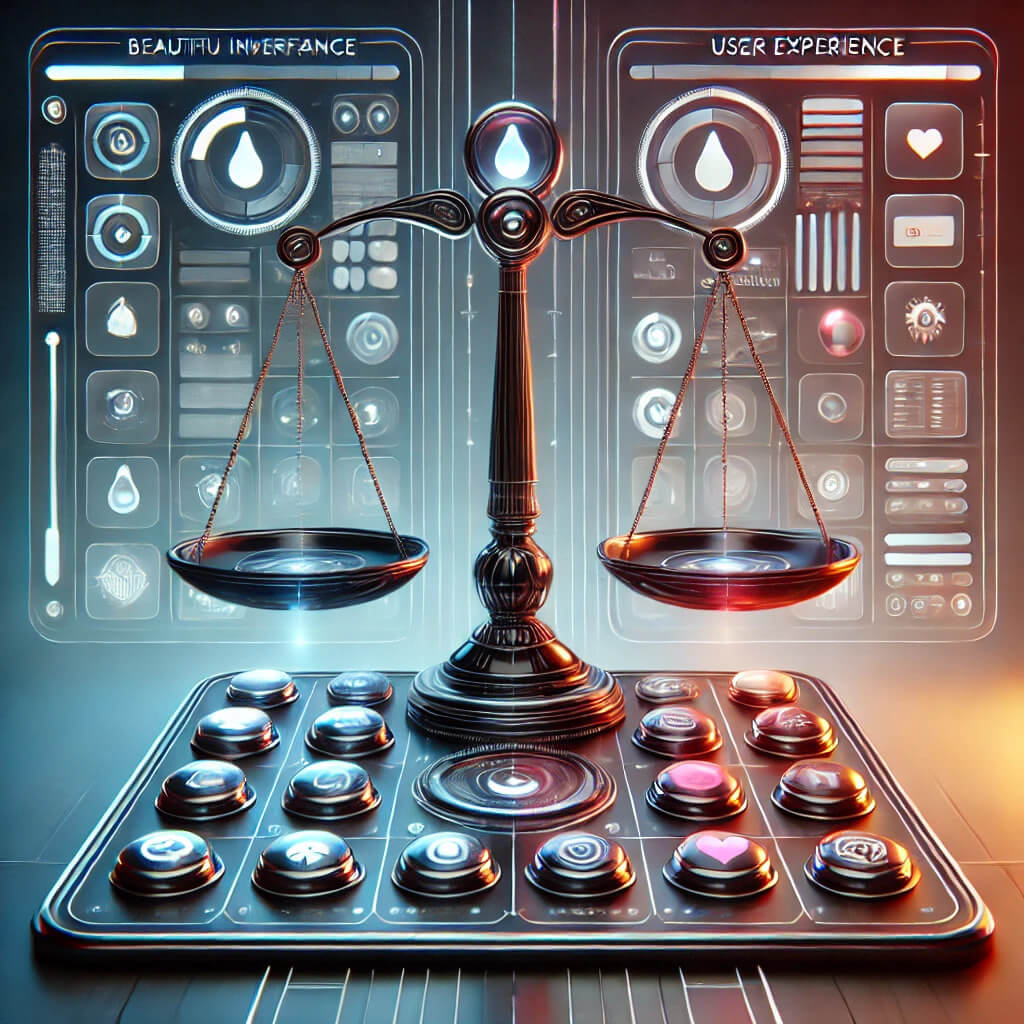The Fine Line Between Beauty and Usability in UI/UX
In the world of digital design, aesthetics and functionality often go hand in hand. A visually stunning interface can create a strong first impression, build brand credibility, and enhance user engagement. However, when UI designers focus too much on aesthetics at the expense of usability, the result can be a frustrating user experience.
It’s a common pitfall: a design that looks sleek and modern but confuses users, hides essential actions, or slows down interactions. So, where’s the balance between a beautiful UI and a seamless UX?
When UI Overcomplicates UX
Great design is invisible. The best interfaces are those that users barely think about—they just work. But sometimes, in an effort to create something unique or artistic, designers unintentionally add unnecessary complexity. Here are some common ways UI design can hinder usability:
1. Excessive Animations & Effects
Motion design can enhance storytelling, guide user attention, and create a delightful experience. However, excessive animations, parallax effects, and slow transitions can become distractions rather than enhancements. If users are waiting too long for an animation to complete before they can take action, they’re likely to abandon the experience.
2. Low-Contrast or Hard-to-Read Text
A light gray font on a white background might look elegant, but if readability suffers, it’s a problem. Design trends sometimes prioritize aesthetics over accessibility, making text difficult to read for users with visual impairments—or even those using a screen in bright lighting conditions.
3. Overuse of Abstract Icons
Icons are great for creating a clean and modern interface, but if they are too abstract or unfamiliar, users may struggle to understand their meaning. A simple label next to an icon can often prevent unnecessary guesswork.
4. Form Over Function in CTA Placement
Call-to-action (CTA) buttons are crucial for guiding users toward key actions. If they blend too much into the design, are hidden under layers of UI, or require extra steps to access, conversions and usability suffer.
Striking the Right Balance
A well-designed interface is not just about looking good—it’s about working well. Here’s how UI/UX designers can ensure that aesthetics support usability rather than hinder it:
✅ Test with real users – What looks intuitive to a designer may not be obvious to the average user. Usability testing can reveal pain points and help refine the experience.
✅ Follow established design patterns – Innovation is great, but users rely on familiarity. Keeping some conventional UI elements (like recognizable icons and navigation patterns) makes an interface easier to use.
✅ Prioritize clarity and accessibility – Readability, contrast, and intuitive layouts should always come before flashy effects.
✅ Speed matters – Performance should never be sacrificed for aesthetics. Keep animations snappy, ensure buttons are easy to tap, and remove unnecessary steps.
✅ Function over form, always – A great UI should enhance, not overshadow, the user experience. If an element doesn't add value to usability, reconsider its necessity.
Final Thoughts
Beautiful design and seamless user experience should not be in conflict—they should complement each other. A well-balanced UI is not just visually appealing but also functional, accessible, and user-friendly.
Next time you’re tempted to add an extra animation, hide a menu for the sake of minimalism, or choose form over function, ask yourself: Is this helping or hurting the user? Because in the end, a good design isn’t just about looking good—it’s about feeling effortless to use.
